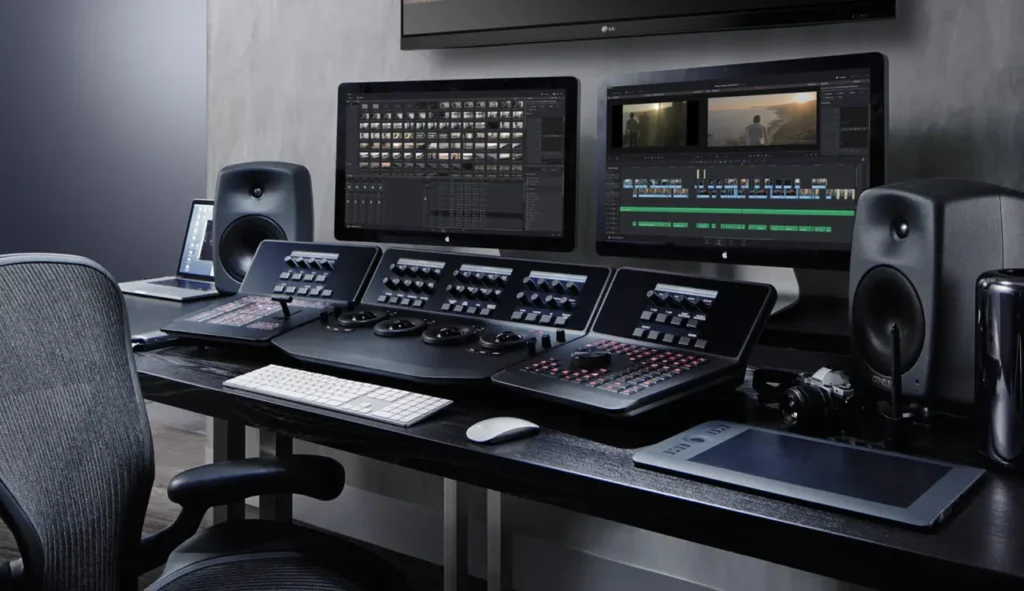I’m a YouTuber making $11,000 every single month, and I get hundreds of messages every single day from video editors, and I reject 99.99% of them for the exact same reasons. If you’re a talented video editor, which I know you are, I’ll give you all of the secrets to getting as many high-paying video editing clients as you can handle. By the end of this article and as a bonus, I’ll also show you how to make the most money possible with these clients. But first, here’s how most people reach out to YouTubers that they want to edit for and why it doesn’t work.
Most people either reach out through email or Twitter DMs, which don’t get me wrong, is totally fine. If it’s an email, the subject line will usually be something like “video editor,” “professional video editing services,” or something like “get more views on your videos,” and then the body of the email will go something like this.

Hi, my name is ________. I’m a video editor and graphic designer of seven years with experience in Adobe Premiere Pro and After Effects. I saw your channel and was truly impressed with the quality of videos. However, I noticed some things that could be improved and I am reaching out to offer my editing services. Here are some key points of my services. Then they’ll list a bunch of buzzwords like “seamless editing,” “smooth motion graphics,” “professional color grading,” and so on. I truly believe that we can work together to boost the views of your channel. If you are interested in collaborating, please do not hesitate to reach back out your name now.
There’s a lot wrong with this, and I personally ignore every single email or DM like this that I get. This is what I call level one outreach as a video editor. And throughout this article, we’re gonna go through four different levels to eventually get you to a point where you can reach out to big clients with a ton of money and get a lot of jobs really easily.
But first, let’s break down why this message is getting ignored 100% of the times it gets sent out to start, it’s super generic. People who need editors are getting reached out to by way more people than they can or even want to hire. So if your message doesn’t stick out, you’ll never get a response. This particular email looks like every single other video editor in my DMs, so there’s zero chance that I’m gonna respond.
Second, I have literally zero idea if this video editor is even any good. He says that he has seven years of experience editing, but the number of years one works has almost zero correlation to skill in the world of video editing. Because it’s really easy for people to just lie about their experience, and years of experience are gonna be less or more, depending on the style of editing that one has experience in. For example, a veteran filmmaker might have 20 plus years of experience editing films with simple jump cuts, but would be completely lost if you asked them to do an Eamonn Godsey style edit with crazy After Effects motion graphics and smooth transitions, this particular editor lacks any kind of portfolio or social proof. Besides the claims that he makes about himself, which practically mean nothing because anybody can say anything about themselves. So let’s add a link to this editor’s portfolio, to the email, and also some previous work experience to prove that he is legit.
If you’re reading this right now and don’t have a portfolio or previous work experience, then getting those should be your next step. Start by reaching out to clients and say that you’ll work for free, and in return, you’re able to have projects to add to your portfolio, as well as testimonies and legit work experience that you can use later on. This will pay off for you when you’re able to use your portfolio and work experience to get editing jobs like I’m demonstrating right now. So it’s not bad or anything, but ideally you’re working for others to build your portfolio to actually host your portfolio. Google Drive or a site like Behance works as long as you organize things properly. Put things into specific folders based on editing style, niche, or however detailed you can be to give your clients the easiest route to finding something they like in your portfolio. For example, if you’re reaching out to a client that makes faceless videos in the finance niche, you’ll probably want to have a folder with faceless edits that you link them directly to or even better, have a subfolder in your folder of faceless edits of faceless edits in the finance niche. To be even more specific, this makes it so much easier for you to get hired.

Revisiting the email that we wrote earlier, we can honestly just replace that whole part with all those buzzwords and add a link to our portfolio. Let’s also make the email more specific to the client because like we’ve gone over, it’s very easy for a YouTuber to ignore your message if it looks like all other 1 million emails in their inbox, and it’s also usually pretty quickly obvious to a YouTuber that you’ve just blasted the same email out to a billion other YouTubers and changed a couple words, which again, makes it so much less likely for you to get hired. This email is also super wordy and could be written a lot shorter to make it easier for the client to read.
With all of those changes in the books, we’ve now hit level two, and it’s already so much easier for us to get a bunch of video editing clients.
This leads us into level three, which, in contrast to the previous levels, actually doesn’t involve us reaching out to anybody with an email or a message.
We’ll come back to the email in level four. For this level, you’re gonna build social proof on social media platforms like Twitter and YouTube that allow potential clients to discover you without you having to discover them. I personally make content on YouTube and post on Twitter, and even though I don’t take very many freelance jobs anymore, I get hit up all the time for work. In addition to my actual portfolio, these social medias act as further social proof and a portfolio in the sense that they show people everything I’ve done and what I know. Having a Twitter, in particular, is useful because you can post a portfolio of your edits and also informational threads that show the world that you know a lot about editing and YouTube. This also gives clients that need editors an easy way to message you, which means you don’t have to send out as many emails yourself.
We always have people reaching out to us asking for editing, and we’ve been able to make a ton of money off of this through our strategy specific to YouTube, giving us 110 potential editing clients with just three videos. I’ll let him explain the rest. Obviously. First, you need to make a bridge. For example, the first time I get one client was literally with Nate and was because I was making a bridge. And you need to build, obviously a let’s say a reputation, but you can do it. And how many submissions does it say 116? If you’re able to get to level three, you’ll definitely have a ton of good editing clients.
However, every editor has a person or people that they dream of working for, and if you don’t, then you should, because some clients are gonna be able to offer you more than just money. If you’re able to establish long-term deep relationships with big YouTubers, you’ll have access to all of the secrets they have that nobody else does. We call this secret sauce. If you’re able to pick up on these secrets by working for exclusive, high-level clients, then you’re able to use said knowledge to start businesses on your own, level up your YouTube and editing skills, and overall get rich and just be successful overall. The kicker is, most clients that will give you the keys to success on YouTube or whatever already have editors. So to lock them in, you’re gonna have to advance to level four, which basically makes it impossible for the people you reach out to say no.

Here’s the deal. Our current email is good, but it’s still possible for potential clients to ignore it or say no, especially if they already have editors, or if your portfolio doesn’t have anything close enough to the editing that they want. You can always offer to edit the first video for free as a sample, but this is still a lot of work for a potential client that you haven’t hooked into to respond to your message, give you the assets, wait for you to send it, review it, give you feedback, and all that bullshit. Instead, you should take one of their old videos, re-edit it to make it better, attach it to the email and say something like, hey, I’m blank. I’m a video editor and I want to work for you. I took X video of yours and re-edited it to make it better, and if you like it, you should reply to this email and we’ll talk about how we can work together in the future. Your name? It’s short, simple, and gives the person that you’re reaching out to literally zero reason to say no.
If the video that you re-edited looks better than it did initially. Combine this with good social proof and previous work experience, and you’re guaranteed to get high-level clients responding to you. The only disadvantage of this is that it’s a lot slower than just blasting out emails to a bunch of people, but I promise you, long term it is so worth it. And when all is said and done, you’re gonna end up with a lot more value than if you did anything else. But now that we have all these clients, I’m gonna share with you the secret to making the most money off of them. Like I’m talking thousands of dollars first, don’t work hourly. It might seem impressive if you’re able to land your first editing job at $30 an hour or so. But this means that, for example, to make $300, you have to literally work ten hours on a video. This means that to make more money, you’re literally forced to work more hours, leaving very little room to scale with only 24 hours in a day. In the case of a $30 an hour job, you’re capped at $600 a day if all you were to do was work. And if we’re being realistic you’re probably limited to one job a day at max, so that’s around $300 a day. But that’s even with working long ten-hour shifts every day, which is brutal and will burn you out quickly.
So realistically, it’s probably gonna be a lot less. Plus, this is super inconvenient for your clients because A, they have to trust that you’re not just gonna slide in, that you worked a couple extra hours when you really didn’t And B imagine they have a budget for a video and you work over that budget with the number of hours that you put into the project, and they don’t have a finished video by the end of it. Okay. It’s just not a really good way to go about things. So instead, you’ll want to take a flat rate per project. This is easier for you and your client, and it also gives you a lot of room to scale. If you follow my specific strategy. But before I share my secrets, let me introduce you to video. Video is the most convenient and comprehensive online video editor for you and your next project. With videos. New Magic Cut feature, you’ll be able to simply drag and drop a clip into the editor, and with just one easy click of a button on Magic Cut, voila! It does the work for you, saving your time and effort. Gone are the days of worrying about silences, filler words, mistakes, or double takes when recording your videos. And also gone are the days of spending hours manually editing your own videos just to find the right mesh of clips. Because video is magic, cut has got your back for all of that and gives you the perfect video. Just like that. And the best part? The Magic Cut feature works on videos of any length, no matter how long they are. So podcasts, presentations, webinars, social media, shorts, or whatever videos Magic Cut has you covered.
So what are you waiting for? Ready to transform your next editing project with Magic Cut and video? Click on the link in the description to find out more about video. If you’re interested But let’s say you estimate a job will take you ten hours, earning you $300 with an hourly rate of $30 an hour. What you’re gonna do is tell the client that you’ll probably turn it around in about ten hours for $300, which for you is likely a couple days of work. Then, instead of taking ten hours to finish, you’re gonna hyper optimize your workflow and get better at editing to finish it in only five, which leaves you five hours to take another job or just chill and do something fun that makes you happy and keeps you safe. Imagine you speed up your workflow so much that you’re able to turn around that ten-hour job in just an hour. You’ve basically turned what used to be a $300 set of ten hours into a $3,000 set of ten hours because you’re able to crank out ten one-hour projects within that timeframe. And I know that seems like a crazy thing to do, but trust me, it’s possible.




